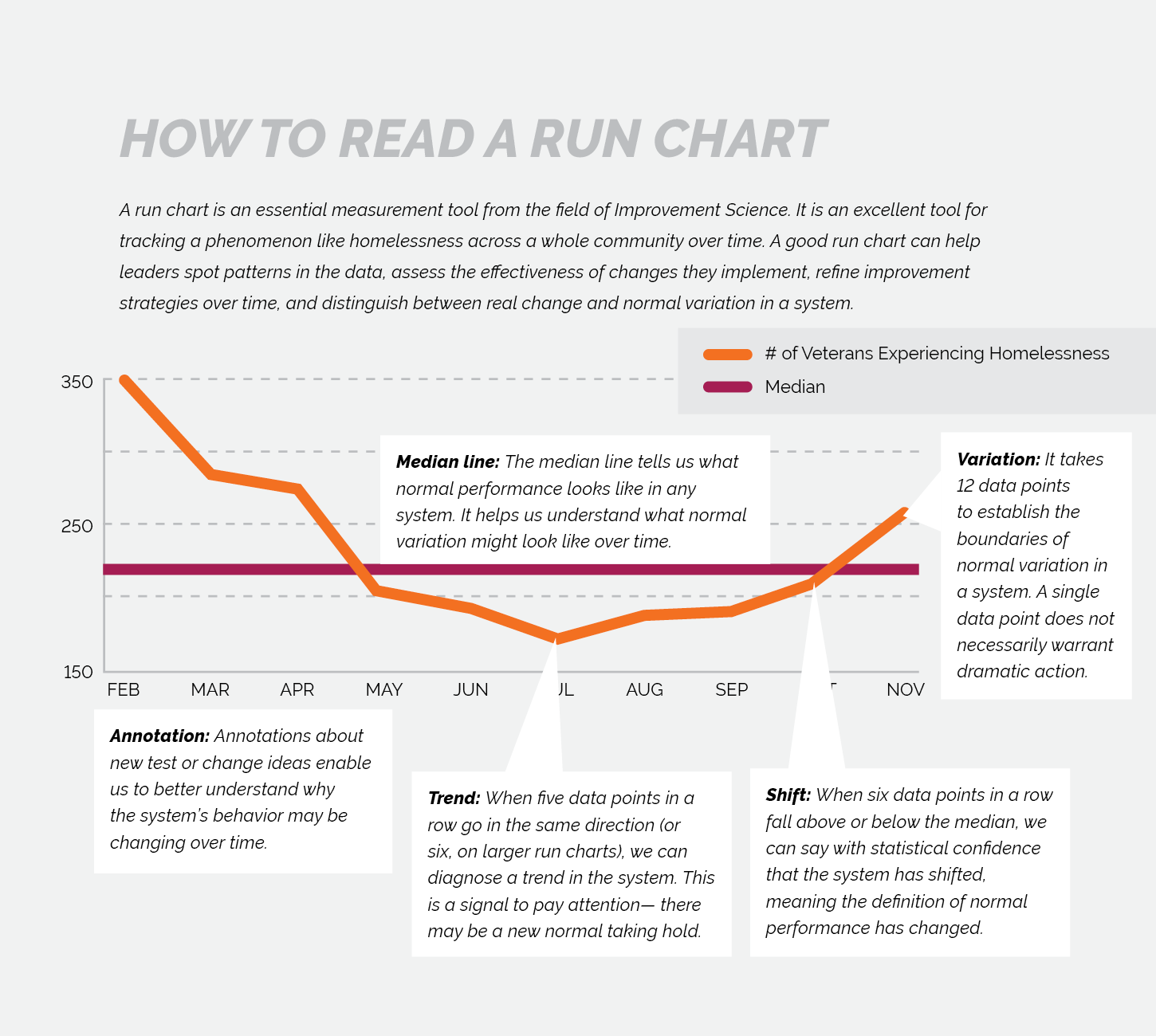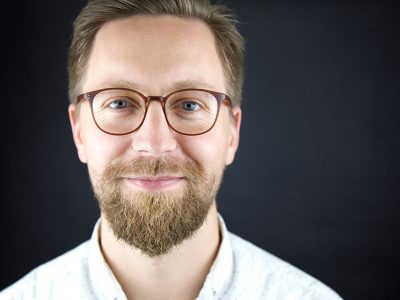Can a large city end homelessness?
To date, the communities that have reached functional zero are small to mid-sized communities. But the exciting news is that large cities are not far behind.
We work with a host of large cities, including six of the 20 largest cities in the country. Many of them have made measurable reductions for a population experiencing homelessness. For example, Detroit has reduced the number of veterans experiencing homelessness by 47% in just the last three years, which is significantly higher than the national reduction of 11% in veteran homelessness over the same time period.
Can you end homelessness without increasing affordable housing?
The surprising reality is that many communities are driving reductions in homelessness — some even getting all the way to functional zero — without new housing supply.
Simply creating new affordable housing does not automatically reduce homelessness. A coordinated system is required to match a community’s prioritized by-name list of those experiencing homelessness with new housing investments.
How are communities leveraging social impact investments to close the housing gap?
Community Solutions has secured $135 million to close out the CS Large Cities Housing Fund, a first-of-its-kind social impact private equity fund that provides crucial housing resources to individuals exiting homelessness and middle-income individuals. The Fund represents an important advancement in the work to secure more affordable housing and address the challenge of homelessness in the United States. Here’s how it works:
Social Impact Capital
- Instead of financing through Low Income Housing Tax Credits — which can take years — it uses investors who are interested in social impact, beyond making a return on their money.
Nonprofit Ownership
- The property is owned by national or local nonprofits who are not incentivized to maximize the profit of the property.
Connection to the Housing System
- The property is linked to the local housing system, rather than remaining a standalone piece of housing that is not connected to the ongoing needs of people at risk of or experiencing homelessness in the community. As units turn over and become vacant, the new model prioritizes the most vulnerable people experiencing housing instability for residence.
Property Management Plus
- The property features an enhanced form of property management where residents are connected to social services before they can enter a situation where they become housing unstable and get evicted. For example: If a resident is unable to pay rent because they need urgent medical care, the building would help connect them to care first.
Since launching in 2022, the Fund has acquired 1,155 apartment homes in six cities that are part of the Built for Zero movement to solve homelessness and housed over 270 individuals exiting homelessness. The Fund aims to acquire more than 2,500 housing units; half of the units will be permanently dedicated to people transitioning out of homelessness, including veterans and people experiencing chronic homelessness.
What is a by-name list?
A by-name list is a comprehensive list of every person in a community experiencing homelessness, updated in real time. Using information collected and shared with their consent, each person on the list has a file that includes their name, homeless history, health, and housing needs.
By maintaining by-name data, communities are able to track the ever changing size and composition of their homeless population. They know current and detailed information on every homeless person in a given subpopulation.
What is a homeless response system?
In general, the term “homeless response system” refers to the various organizations and entities within an area that serve homeless individuals and families. These providers can include nonprofit organizations, housing authorities, local and federal government agencies, faith-based organizations, the VA, shelter providers, and other homeless coalitions.
What is a Continuum of Care?
The most structured piece of the homeless response system, which receives funding from The Department of Housing and Urban Development, is known as a Continuum of Care (CoC). HUD designed the CoC structure to promote community-wide planning and strategic use of resources to address homelessness by nonprofits, state and local governments, and other service providers.
What is functional zero?
Functional zero is a dynamic milestone that indicates a community has solved homelessness for a population. Reaching and sustaining this milestone is in service of building a future where homelessness is rare overall, and brief when it occurs.

Functional zero for veteran homelessness: A community has ended veteran homelessness when the number of veterans experiencing homelessness is less than the number of veterans a community has proven it can house in a month, with a minimum threshold of 3.

Functional zero for chronic homelessness: A community has ended chronic homelessness when the number of people experiencing chronic homelessness is zero, or if not zero, than either 3 or .1% of the total number of individuals reported in the most recent point-in-time count, whichever is greater.
What is the difference between functional zero and the federal benchmarks and criteria for ending veteran homelessness?
The Federal Criteria and Benchmarks and functional zero represent different approaches to measurement, but they are not exclusive. Achieving the Federal Criteria and Benchmarks for ending veteran homelessness is an important milestone on the path to reaching functional zero, and a major accomplishment for a community.
To achieve functional zero, a community must have fewer veterans experiencing homelessness than it can routinely house in permanent housing in a single month. Our ultimate objective is to help communities build systems that can achieve and sustain functional zero, even if new veterans experience housing crises over time.
Do communities in Built for Zero only work on veteran and chronic homelessness?
The goal of Built for Zero is to help communities design and strengthen their systems to end homelessness, beginning with either chronic or veteran homelessness. Reaching zero for these populations does not simply bend the curve on the overall population of people experiencing homelessness in a community — these efforts lay a critical foundation upon which communities can work to end homelessness for all.
So although communities in Built for Zero often begin with either veteran or chronic homelessness, they usually then move on to other populations, such as family and youth, on their way to ending homelessness for all.
What are the communities in Built for Zero?
Alaska
Alabama
California
Colorado
- Colorado BoS Chaffee, Creek, Custer, Lake, Park, Teller
- Colorado BoS Las Animas & Huerfano
- Colorado BoS Moffat & Rio Blanco
- Colorado BoS Northeast Plains
- Colorado BoS San Luis Valley
- Colorado BoS Southeast Plains
- Colorado BoS Southwest – La Plata
- Colorado BoS Southwest – Montezuma
- El Paso County
- Fremont County
- Mesa County
- Metro Denver CoC – Adams County
- Metro Denver CoC – Arapahoe County
- Metro Denver CoC – Aurora
- Metro Denver CoC – Boulder County
- Metro Denver CoC – Broomfield County
- Metro Denver CoC – Denver County
- Metro Denver CoC – Douglas County
- Metro Denver CoC – Jefferson County
- Metro Denver CoC – Tri-Cities
- Northern Colorado
- Pueblo
- Roaring Fork
- Western Colorado
Connecticut
District Of Columbia
Florida
Georgia
Hawaii
Illinois
- Champaign, Urbana, Rantoul/Champaign County CoC
- Decatur/Macon County CoC
- DuPage County CoC
- Heartland CoC (Springfield/Sangamon County CoC)
- Kane County CoC
- Lake County
- McHenry County
- Peoria, Pekin/Fulton, Tazewell, Peoria, Woodford Counties CoC
- Rockford, Winnebago County, Boone County
- Rock Island, Moline/Northwestern Illinois CoC
- South Central Illinois CoC
- Suburban Cook County
- West Central Illinois CoC
Indiana
Kansas
Louisiana
Massachusetts
Maryland
Maine
Montana
Nebraska
New Mexico
Nevada
Oklahoma
Oregon
Pennsylvania
Virginia
Does Built for Zero address “hidden” homelessness?
Yes, our work addresses “hidden homelessness,” such as families, unaccompanied youth, situational homelessness driven by poverty, domestic violence, etc. Our approach is to help communities work toward ending homelessness for all, but focusing on improving systems for one population at a time. So while many communities opt to start with veterans or people experiencing chronic homelessness, it is a focused starting point rather than the finish line.
Built into the organization’s theory of change and our strategic plan is also the need to reduce or end inflow into homelessness which requires Community Solutions and community teams to develop solutions to prevent individuals, youth and families from becoming homeless in the first place.
Does Built for Zero’s by-name list introduce privacy concerns for vulnerable populations, i.e. by law enforcement?
In most communities, anyone on the by-name list will sign a consent form that stipulates who that can be shared with. Community teams decide who that data will be shared with, and in most communities, police are not among those parties.
How do you read a run chart?
A run chart is a tool used by Built for Zero communities to track homelessness across a whole community over time. It allows leaders to spot patterns in the data, assess the effectiveness of changes they implement, refine improvement strategies over time, and distinguish between real change and normal variation in a system.

Why is homelessness a systems problem?
“We must focus on: what is it about our community and our housing structure and our landlords and our other systems that is keeping that person on the street. How can we overcome that system barrier and house that person?” – Jennifer Jaeger, City of Rockford, Illinois
Homelessness is a bellwether. It’s an indicator for how well our systems are serving the needs of populations who are often the most marginalized, oppressed, or disenfranchised. If homelessness is the result of systems failing these individuals — the solution lies in fixing these systems so they are designed to continuously end homelessness for all populations.
Are you experiencing or at risk of homelessness? Do you need assistance?
Use our new Homeless Resource Locator to easily find names and contact information of homeless service providers near you.




